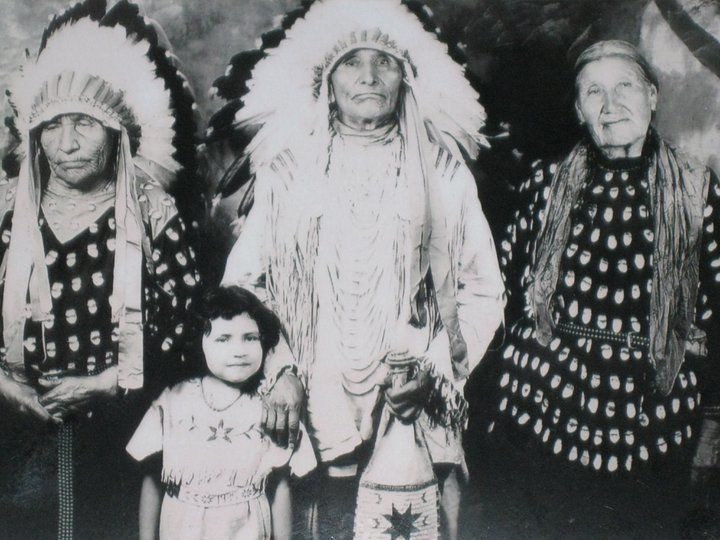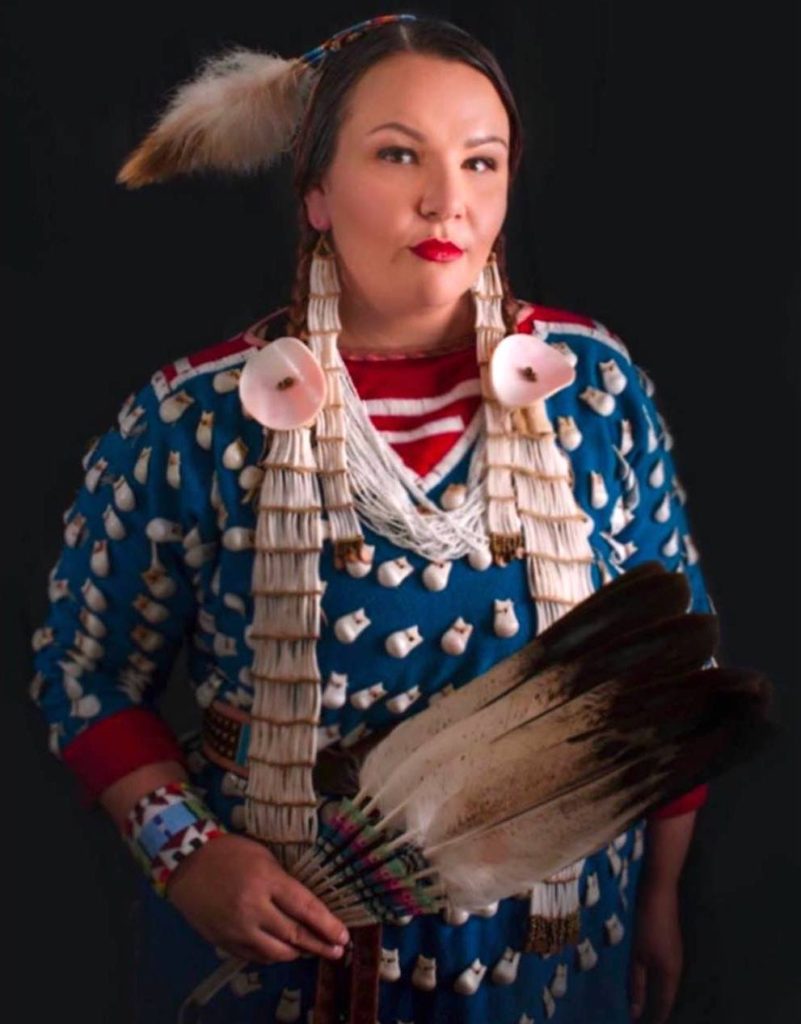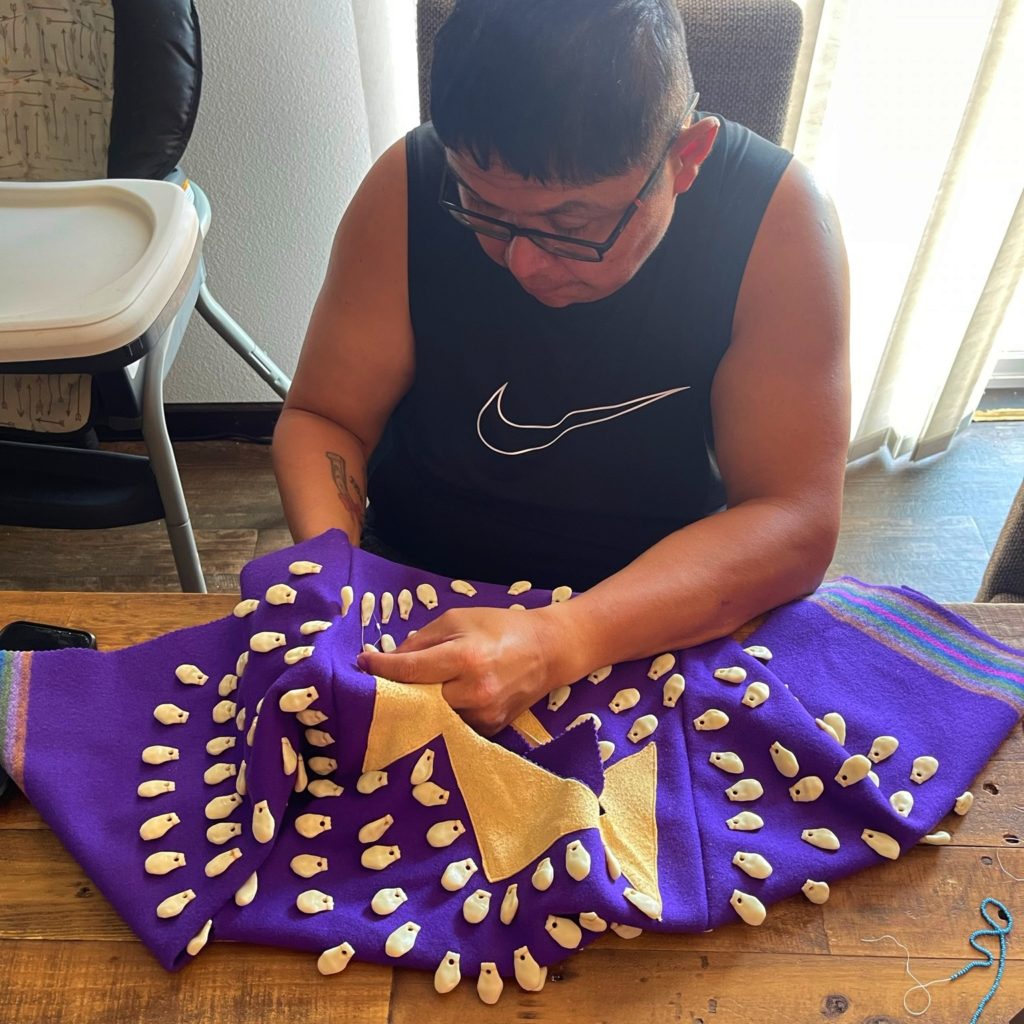No products in the cart.

The Hidatsa Tribe
of Mandan, Hidatsa and Arikara Nation
📍Fort Berthold Reservation, North Dakota, USA
The Hidatsa are a Native American tribe from what is now North Dakota. Before the reservation period, the Hidatsa were partially sedentary and partially nomadic. They were once united with the Crow tribe, but after a dispute arose the Crow decided to separate into a fully nomadic tribe. In 1868, the Hidatsa, Mandan, and Akihara tribes formed the MHA Nation, also known as the Three Affiliated Tribes. This alliance is still active today, with around 17,000 members as of 2023.
Basic Hidatsa dress was similar to that of many Great Plains societies. Many raw materials came from the buffalo, but decorations included embroidery, quillwork (made from porcupine quills), and elk teeth. When teeth became unavailable, false “teeth” would be carved from deer antlers or buffalo bones. A typical women’s outfit would have included a decorated yolk draped over the shoulders, with the rest of the dress decorated with elk teeth. Hundreds of elk teeth could be used for one special piece.
Men’s and women’s garments used different patterns of decoration. Men’s robes used a design called the “black war bonnet” that used concentric circles and diamonds. Robes would be augmented with paintings of horses or activities associated with each man, showing off a man’s abilities and achievements in battle. Women’s robes had a “box and border” design that used a colourful box enclosed by a border of geometric figures.

Norma Baker-Flying Horse is an enrolled member of the Hidatsa tribe and a member of the Dakota Sioux and Assiniboine tribes, as well as an adopted member of the Crow Nation. After working for her tribal government for many years, she began upcycling dresses using beading and native designs. She then founded Red Berry Woman, giving her native name to her new business. Norma Baker-Flying Horse is the recipient of the 2020 International Designer of the year, the 2022 Phoenix Fashion Week Designer of the Year, and the 2022 Cultural Recognition Visual Arts Grammy Award co-recipient. Her husband, Elmer Flying Horse, is Standing Rock Sioux and Diné, and is a skilled beader himself.
For this exhibition, Norma Baker-Flying Horse designed a mother and daughter set – a traditional Hidatsa girl’s ensemble and a contemporary woman’s shift. The felted wool of these dresses were first brought by early settlers and traded with Native communities, thus being commonly known as “trade cloth”, though the original name was Stroud, from Stroudwater, England, where it was first manufactured. The fabric is inexpensive, hardy, resistant to fraying, and warm – ideal for the northern plains where the Hidatsa reside.

The floral scarf was adopted from Ukrainian immigrants who came to the territory in the 19th century, the pattern evoking the floral motifs already used in Cree and Dené beadwork. The Cree people, who are closely related to the Hidatsa, gave them the name kokum which means “grandmother.” More recently, kokum scarves have been worn in solidarity with the Ukrainian people. The belt is leather, with brass studs and conchos, and was made by Norma Baker-Flying Horse’s brother, James Moran, at her request in 2016.
The black chiffon dress is from Red Berry Woman’s ready-to-wear line – and uses patterns of the elk teeth and conchos to pay tribute to native heritage. Norma Baker-Flying Horse’s contemporary Hidatsa-inspired pieces are for sale on her website or by special order, but she does not sell traditional Hidatsa garments for non-native wearers, feeling that it does not honour her heritage.

Photo credits:
- Rattles Medicine (the daughter of Poor Wolf, and wife of White Duck), Bears Arm with un-identified child, Long Corn Silk, Hidatsa, before 1939. Courtesy of Norma Baker-Flying Horse.
- Norma Baker-Flying Hose wearing her traditional costume. Courtesy of Norma Baker-Flying Horse.
- Elmer Flying Horse working on outfit. Courtesy of Norma Baker-Flying Horse.
